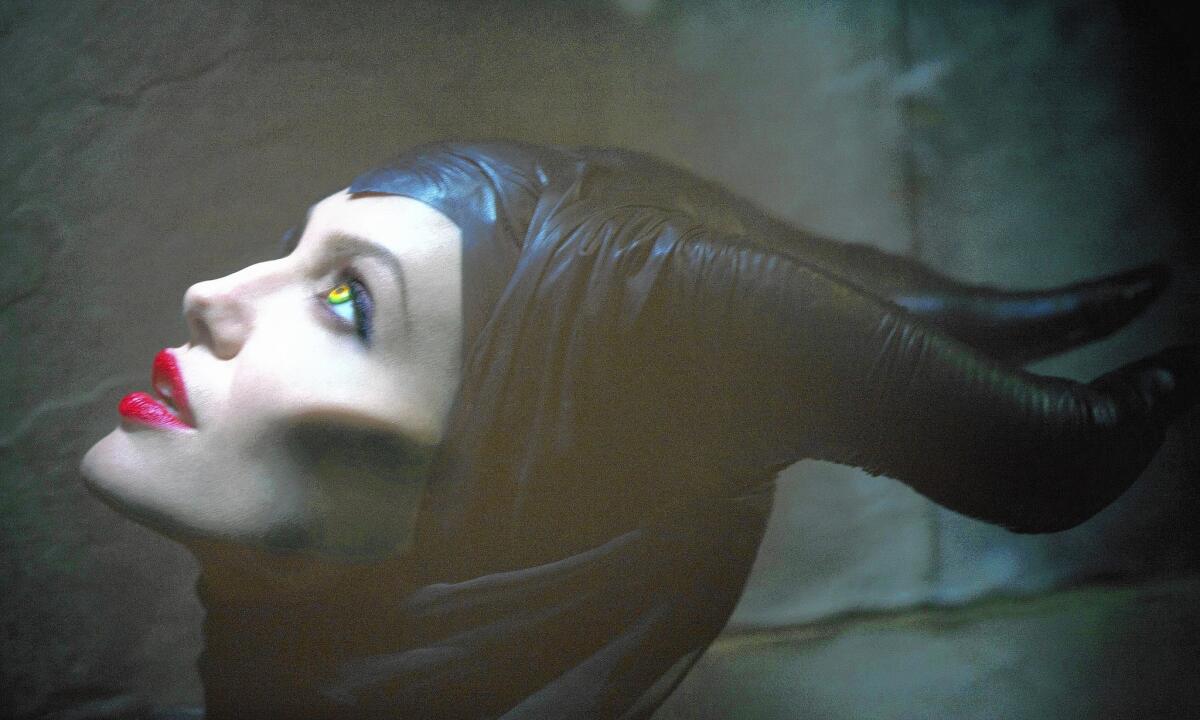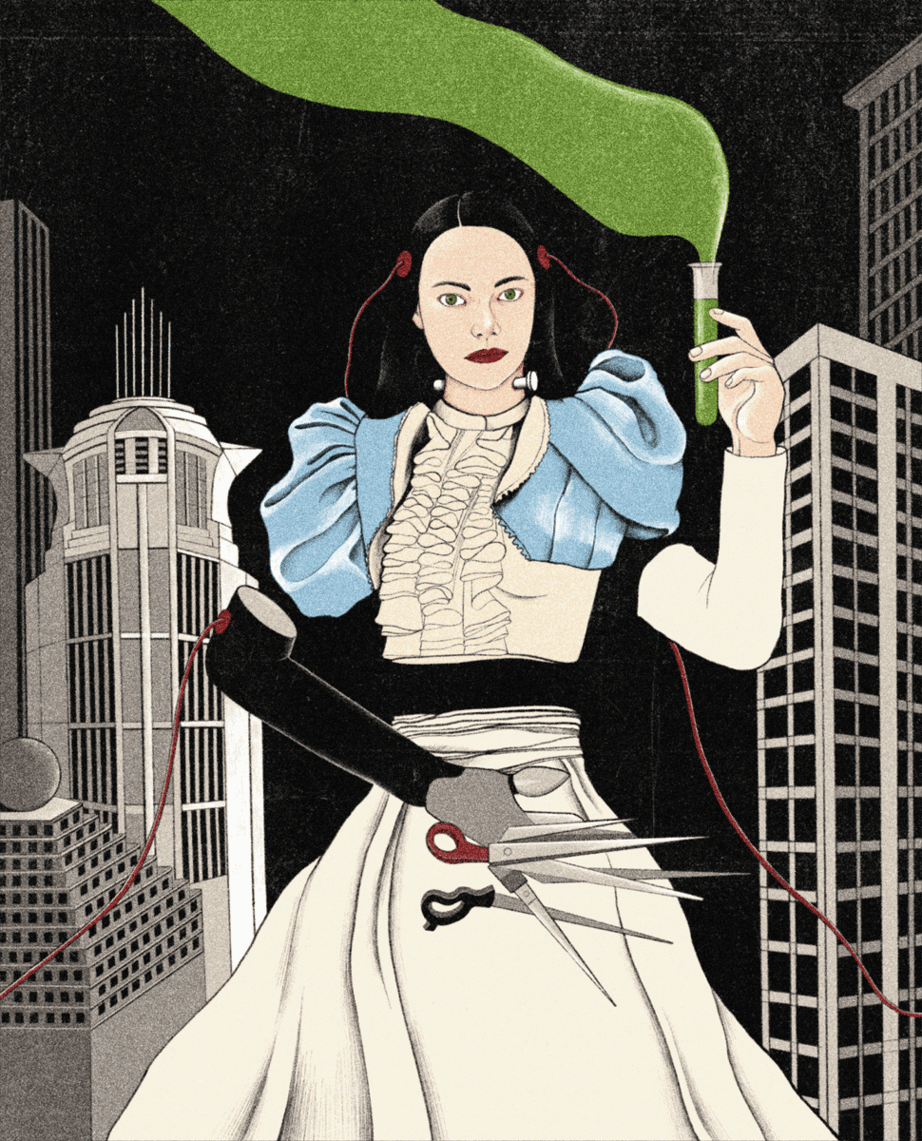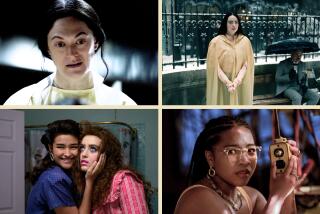Op-Ed: Disneyâs âMaleficentâ: Romancing the devil

Disney has long had a complicated relationship with Satan, paganism and heavy metal. The latest evidence: the studioâs new film âMaleficent.â
In 1940, Disney conjured the animated masterpiece âFantasia,â in which Mickey Mouse flirted with the dark arts as the Sorcererâs Apprentice; a dinosaur segment was set to Stravinskyâs pagan death dance âThe Rite of Spring;â and the Slavic black god Chernobog, today beloved by European black-metal performers, made a dramatic appearance on Bald Mountain. In 1959, in the original âSleeping Beauty,â the fairy Maleficent invoked âall the powers of hellâ before transforming herself into a dragon. In 1996, Disneyâs Hollywood Records released an album by metal 666er Glenn Danzig (though the label then abruptly fired him).
And now, risking the wrath of monochrome Christians everywhere, Disney has brought forth the box-office smash âMaleficent,â a film that turns its mythic predecessor âSleeping Beautyâ on its golden head.
Once a force of pure evil, the demonic Maleficent (played by Angelina Jolie) has morphed into a sympathetic Earth goddess akin to Demeter, cursing yet protecting her Persephone-like surrogate daughter, the sleeping beauty Aurora.
In endowing the horned Maleficent with motherly love, veteran Disney writer Linda Woolverton takes a stance similar to that of Scandinavian/European black-metal bands such as Immortal, Dimmu Borgir and Behemoth: They embrace darkness in order to align themselves against those who claim to represent the âLightâ â the legions who invoked Christ while destroying primeval cultures and slaughtering the metal folkâs tribal forebears. Maleficentâs brutish screen opponents, crowned with medieval helmets, lack only crosses on their chests to identify them directly as Crusaders.
Predictably, some Christians are taking umbrage. A review of âMaleficentâ in Christianity Today faulted the film for rejecting the notion of original sin in favor of the idea that âevil must have a psychological, sociological or biological cause.â
When conservatives talk about the war on Christmas and Christianity, in one sense theyâre right: Jesus has lost some reputational ground. But the bad PR isnât because media Jews want to slaughter the Lamb; itâs because Christianity has grown guilty by association with tea party extremists, Koran-burning ministers and child-molesting priests.
The rebranding of Maleficent is perhaps another sign that Americans have grown uncomfortable with their traditional role as idealistic world-savers; after Vietnam, Chile, El Salvador, Iraq and Afghanistan, only the willfully ignorant can ignore the gore on our swords. Itâs easier to identify with a Maleficent than a messiah.
Our culture reflects this self-disgust in thousands of ways. The bumbling but well-meaning 1960s comedic icons of âGilliganâs Islandâ and âThe Dick Van Dyke Showâ have been universally replaced (even on the Disney Channel) by self-interested schemers prototyped in the 1980s on âMarried ⌠With Childrenâ and âSeinfeld.â The crime-fighting Batman of comic books became first an ironic â60s TV spoof and then, in film, an ever darker and more psychotic figure who creates as many problems as he solves.
Millennial Americaâs current role models are bloodsucking vampires and flesh-gnawing zombies â often sympathetically portrayed because, hey, we prefer to think of ourselves as messy eaters rather than exploiters.
So we deserve âMaleficentâ â our vengeful, fallen yet heroic anti-Christian, as beautiful and complex a villain as we might hope to be.
The makers of âMaleficentâ have said they couldnât have made the film without Jolie, and truly, few actresses can match her combination of humanitarian credentials and triumph over personal loss; sheâs an easy demon to root for. When her characterâs two wings are amputated, the meanings multiply in a woman who in real life has been forced to make bodily sacrifices. And after Maleficent notices her bloodied chest after a battle, Jolie looks at us with one of the most delicate, subtle, mortal expressions cinema has ever seen.
If we canât unconditionally love our darkened, compromised selves, she makes us at least like her.
Greg Burk is a Los Angeles writer.
More to Read
A cure for the common opinion
Get thought-provoking perspectives with our weekly newsletter.
You may occasionally receive promotional content from the Los Angeles Times.










